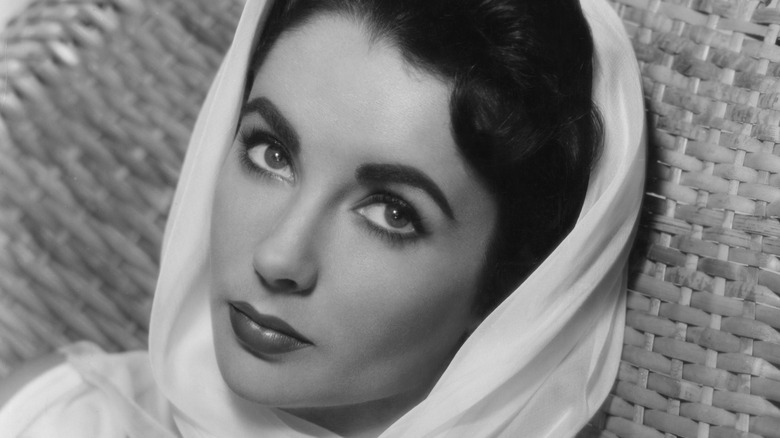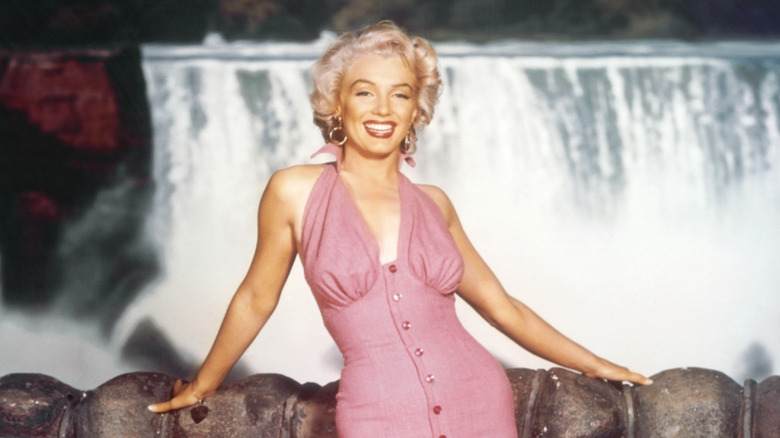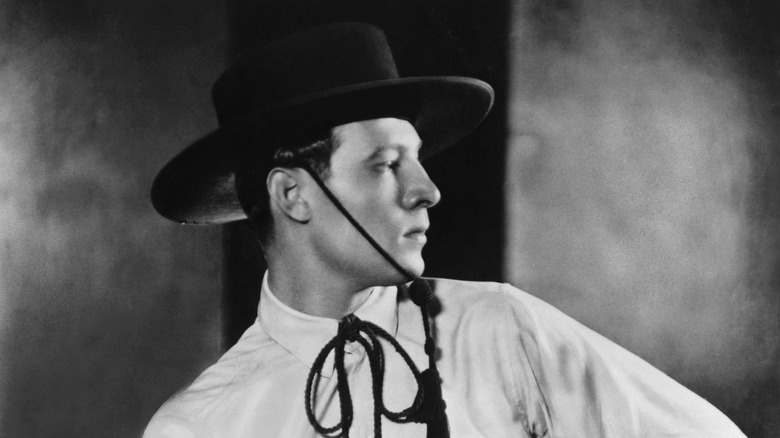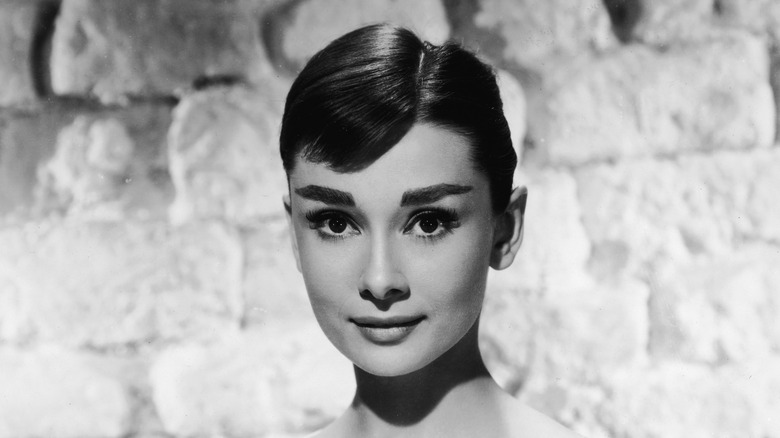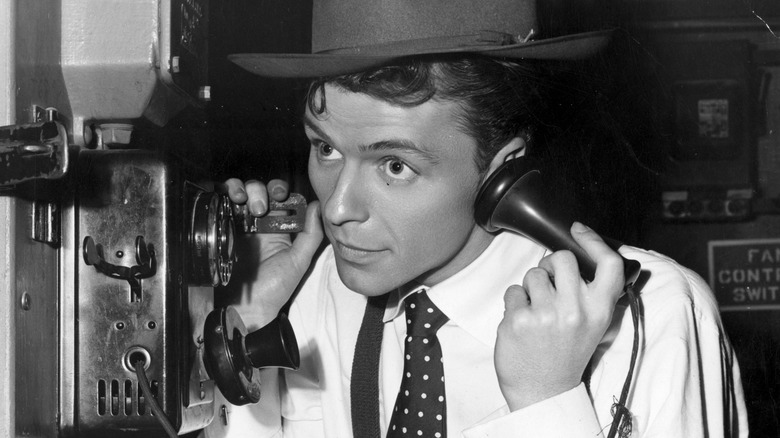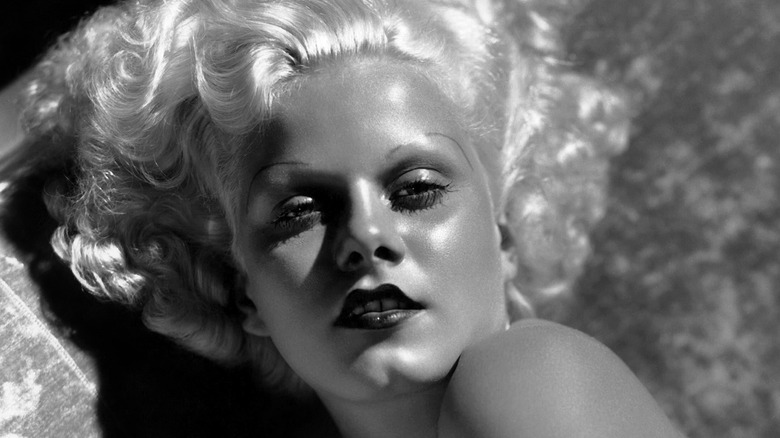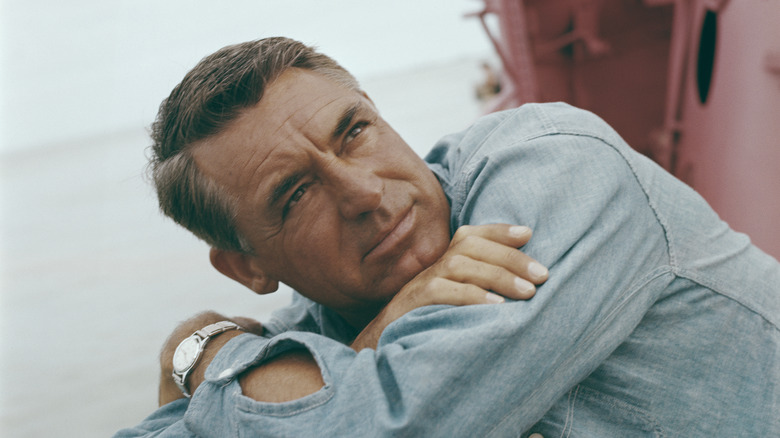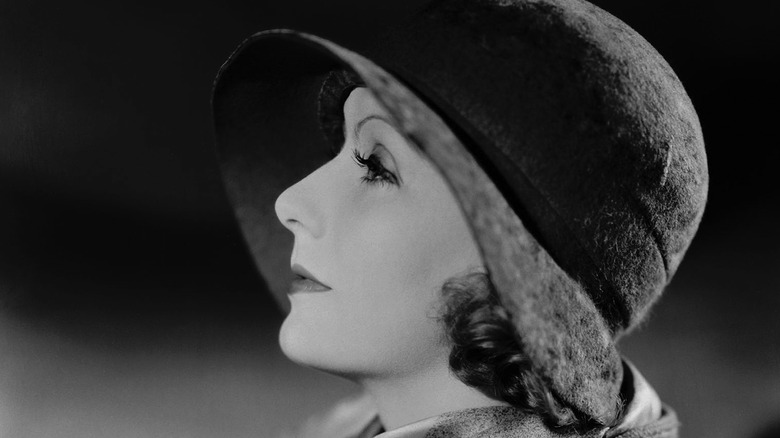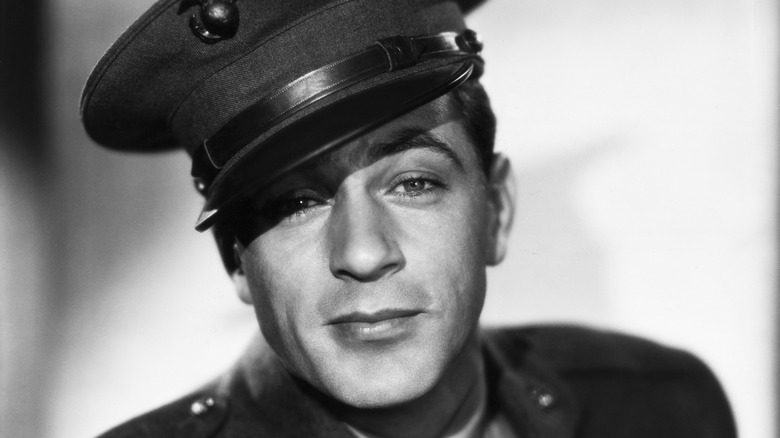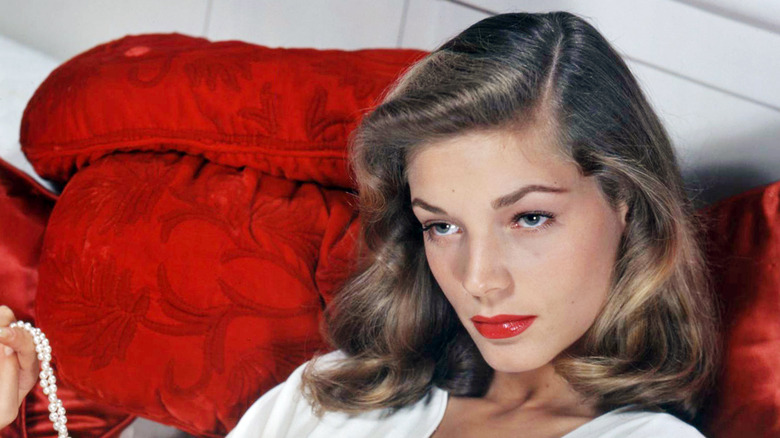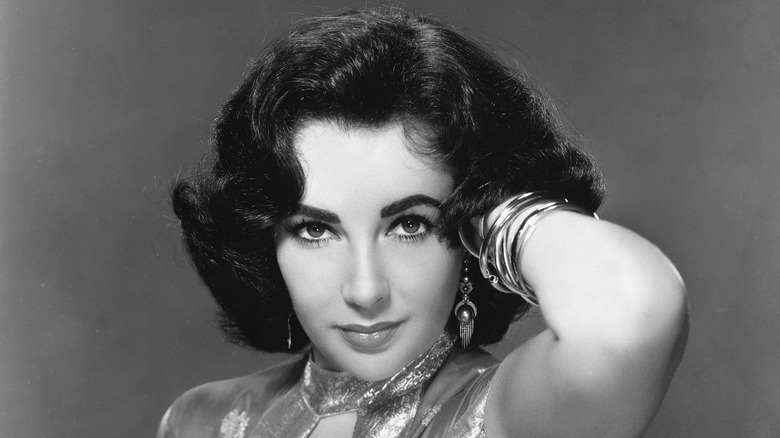The Hottest Classic Movie Stars Of All Time
Hollywood has been re-energized in recent years thanks to the release of some jaw-dropping blockbusters that have finally seen movie theaters back on even footing with home streaming platforms. The showdown between summer 2023 smash hits "Barbie" and "Oppenheimer" became one of the biggest cinematic events in recent memory, and made their stars — including Margot Robbie and Ryan Gosling, and Cillian Murphy and Emily Blunt respectively — some of the most talked-about celebrities on the planet.
That A-list Hollywood stars are almost uniformly drop-dead gorgeous is a fact universally accepted. But arguably few actors today can possibly have the allure of those who worked during the Golden Age of Hollywood, back when cinema was the world's biggest form of entertainment. Nowadays, fans are given insights into the private lives of their on-screen heroes through social media and countless promotional interviews. But back then, stars were far more mysterious, with fewer chances to show the public their true selves. As such, they achieved an almost mythic status among moviegoers, with the actors themselves almost divine in their silver screen beauty. Here are some of the hottest stars of the Golden Age, who may have you telling yourself that they really don't make them like they used to.
Marilyn Monroe
Let's begin with the obvious: Marilyn Monroe, perhaps the greatest pop culture icon outside of Elvis Presley, and the ultimate Hollywood sex symbol. Born Norma Jeane Mortenson on June 1, 1926, she survived a chaotic childhood in which she was raised by 12 different sets of foster parents to become a model in the late 1940s. In the following decade, she established herself as one of the silver screen's biggest female stars through a string of hit features, particularly comedies, such as the classics "Gentlemen Prefer Blondes" and "Some Like It Hot." She was immortalized further in a series of pop art paintings by Andy Warhol in the 1960s.
However, Marilyn Monroe was also a tragic figure who dealt with mental illness, drug addiction, and a tumultuous love life that included much-publicized relationships with baseball star Joe DiMaggio and playwright Arthur Miller. When her body was found on August 5, 1962, her death was deemed a probable suicide. She was 36.
In the years since her death, debate has raged about the exact nature of Monroe's life and career. For many years, she was painted as a victim of the entertainment industry, which critics saw as having sexualized and exploited her. However, more recently those close to the actress, including her friend Amy Greene, have been keen to set the record straight (via Vanity Fair). Greene claims that Monroe was a canny operator who knew how to use her charm to further her career, and that she was less of a victim than some would suggest.
Rudolph Valentino
Rudolph Valentino was a bona fide Hollywood heart throb whose fame and devoted fan base were as great as those of today's biggest stars. Born with the impressive name Rodolfo Alfonso Raffaello Pierre Filibert Guglielmi di Valentina d'Antonguolla in Castellaneta, Italy, on May 6, 1895, Valentino was a sickly child who lost his father to malaria at the age of 11. After being rejected for military service, he relocated to the U.S. in the early 1910s and worked several low-key jobs before getting a job in a New York nightclub where he was employed to dance with wealthy women guests.
According to "Dark Lover: The Life and Death of Rudolph Valentino" by Emily Wortis Leider, Valentino's reputation in the city was ruined after he testified in a divorce trial on behalf of a woman to whom he had grown devoted, alleging that her husband had had an affair; the woman murdered her husband shortly afterward. Then, he quickly established himself as a screen actor, capturing the hearts of audiences in period romances like "The Sheik" and "Blood and Sand," features that typically played up Valentino's perceived exoticism.
Valentino died tragically at the age of 31 from peritonitis. 80,000 people attended his funeral and there was widespread hysteria at news of his death, including suicides and fans mourning at his graveside for years after.
Audrey Hepburn
Like Marilyn Monroe, the Belgian-born actress Audrey Hepburn's iconic status has faded little since her death. Hepburn's beauty and onscreen grace has captivated movie audiences and critics for decades by this point. But while Hepburn's almost supernatural good looks are not in doubt, her legacy is also sealed by the timelessness of the projects she worked on. Her breakthrough role as a sweet and adventure-hungry princess in "Roman Holiday" (1953), as well as her starring role in 1961's "Breakfast at Tiffany's," remain some of the era's best-loved romantic comedies.
Hepburn was born into an aristocratic family in Brussels on May 4, 1929, and was raised in the U.K., though she spent much of World War II in the Netherlands. Originally a ballet dancer, her career began on Broadway, where she starred in "Gigi" in 1951 and was instantly recognized as a major talent. She is also a fashion icon, whose lithe frame made her a prominent model throughout her career. She was married twice.
In her later years, Hepburn moved away from acting and became known as an effective goodwill ambassador for UNICEF, setting the template in many ways for actor activism today. She died from cancer in 1993 at age of 63.
Frank Sinatra
Looking back at the era when Frank Sinatra and the Rat Pack were in their pomp, one could argue that Dean Martin was perhaps the most conventionally good looking of the legendary entertainment fraternity. However, that would be to overlook the insane fandom that Sinatra enjoyed after first breaking into the music business in the 1930s. His skyrocketing stardom during the 1940s was propelled by his vocal talents, but also in no small part by his striking looks and famous blue eyes that won over millions of teenage girls in the U.S. and beyond.
Sinatra's young female audience became known as the "Bobby Soxers," hardcore fans who were so enamored with the singer that he had to be escorted by police as he performed around the country. The Bobby Soxers then became Sinatra's loyal cinema audience as he transitioned into Hollywood with a series of acclaimed movie roles. Highlights of Sinatra's film career include 1945's "The House I Live In," an anti-bigotry short film for which he received a special Academy Award, as well as the classic "From Here to Eternity" in 1953, for which he won the supporting actor Oscar. He was nominated again in 1955 for "The Man with the Golden Arm."
Jean Harlow
Jean Harlow was just 26 years old when she died unexpectedly of uremic poisoning in 1937. But in a few short years she lived a remarkable life both on and off the screen and established herself as one of Hollywood's most captivating leading women, who laid the groundwork for later stars like Marilyn Monroe by creating the "Blonde Bombshell" trope almost single handedly. In 1930 she starred in the controversial film "Hell's Angels," for which she was marketed as the "platinum blonde" (per "Platinum Girl: The Life and Legends of Jean Harlow" by Eve Golden). In a review, Variety described Harlow as "The most sensuous figure to get in front of a camera." Indeed, her raw sexuality set her immediately apart from many other actresses of her day, and outraged many viewers.
Born in Kansas City, Missouri, on March 3, 1911, and raised in Los Angeles and Lake Forest, Illinois, Harlow eloped at 16 with the first of her three husbands. She began her career making comedies for Hal Roach, and entered the talkies alongside Clara Bow in "The Saturday Night Kid" in 1929. Harlow was prized for her ability to deliver wise-cracking and witty dialogue, which made her a perfect co-star for actors like James Cagney, with whom she starred in 1930's "The Public Enemy."
Harlow's first marriage ended while she was still a teenager, and her second ended tragically with her husband's death, which was believed to be suicide. Her third lasted only a year. At the time of her death, she was engaged once again to co-star William Powell, who was heartbroken by the loss.
Cary Grant
There are few more memorable scenes in Hollywood history than that in Alfred Hitchcock's 1959 classic "North by Northwest" in which Roger Thornhill, who finds himself kidnapped in a case of mistaken identity, flees his pursuers over open ground chased by a weaponized crop duster. The scene features Cary Grant, who plays Thornhill, in perhaps his most iconic role.
Over the course of a long and varied career that lasted from the late 1920s until the late 1960s when he lost interest in acting, Grant showed himself to be one of Hollywood's greatest leading men. The British-born actor exuded confidence and charm, as well as a chiseled, clean look which made him a shoe-in for a wide variety of roles, from romance to action. However, it was with Hitchcock that he produced his finest work, and the two remain closely associated in the minds of many fans. Grant died in 1986 at the age of 82, and though revelations that he had a dark side and rumors that Grant was irrationally cheap with the people in his life may have sullied his reputation off screen, he remains a celebrated star of his era.
Greta Garbo
Greta Garbo lived from September 18, 1905, until April 15, 1990. Despite being a legend for the majority of the century in which she lived, she had a surprisingly short, though impactful, movie career. The Swedish-German actress, who was born in Stockholm, relocated to the U.S. where she became one of the most mysterious and beguiling actresses of the silent age.
Garbo's studio, MGM, made a huge profit on her first three films, and when she threatened to return to Europe as a negotiating tactic she was rewarded with a hugely lucrative contract, despite the studio's misgivings as to whether she would also perform well in speaking roles once the talkies became the dominant medium in cinema. It was thought that having Garbo speak would ruin her allure, but audiences remained loyal, and she continued to enjoy great success during the 1930s until the Depression changed tastes and glamour, with which Garbo had become synonymous, was no longer fashionable. Her final screen role came in 1941, after which she retreated from the limelight, which only increased her legend. She lived out the second half of her life in New York.
Marlon Brando
Marlon Brando was one of 20th-century cinema's greatest rebels, both on and off screen, which undoubtedly added to his sex appeal. In 1953, Brando starred as Johnny Strabler in "The Wild One," the classic tale of outlaw motorbike gangs which became one of the most controversial films of its day. Clad in a leather jacket and cap and with his striking good looks and standoffish demeanor, Brando exuded nihilistic cool, and many parents were panicked by what they saw as the film's potential to morally corrode the nation's youth. Buoyed by the glamour of having caused a moral panic, Strabler has arguably set the template for pop culture rebels ever since.
There are many reasons why Marlon Brando was ahead of his time, but his rugged looks and unfettered emotional performances gave Brando an edge of sexuality that few Americans had witnessed on screen before. Brando was known for being sexually promiscuous, a reputation which has come to light again in recent years with revelations of some unexpected alleged affairs with prominent celebrities, including the comedian Richard Pryor. Meanwhile, his activism, which in 1973 saw him reject an Oscar in protest of Hollywood's reductive depictions of Native Americans, made him a hero to many even as he made enemies in the Academy.
Ingrid Bergman
Ingrid Bergman was destined for immortality thanks to her starring role alongside Humphrey Bogart in the 1942 classic romance "Casablanca," considered one of the greatest films ever made. The actress, who was born in Stockholm, Sweden, on August 29, 1915, made a name for herself in Europe before transferring her talents to Broadway and Hollywood. Bergman's good looks were often deployed in morally upstanding rather than bombshell roles, as heartbroken lovers or, in "The Bells of St. Mary's," a nun. She worked on several movies with Alfred Hitchcock in the 1940s, a period which brought her perhaps her greatest fame.
Of course, in Bergman's day actors had many weirdly intrusive rules they had to follow on account of their studio contracts, including morality clauses that excluded wanton sexual behavior. In 1950, the actress met with a storm of disapproval after details of an affair on the set of the movie "Stromboli" leaked into the press, and for a while Bergman's career was a non-starter. Nevertheless, her star power was such that she later staged a remarkable professional comeback, with two Academy Award wins in her long career.
In 1998, Billy Bragg and Wilco recorded "Ingrid Bergman," a composition made from recently uncovered long-lost lyrics by folk legend Woody Guthrie, who undoubtedly harbored some strong feelings for the beautiful woman who graced the silver screen. You can listen to it above.
Gary Cooper
A sense of traditional masculinity was key to the appeal of many male actors in the first half of the 20th century, and none epitomized that ideal as well as Gary Cooper, who was born in Helena, Montana, on May 7, 1901. Having spent some of his formative years in England, where his parents were from, Cooper returned to Los Angeles where, intending to be an illustrator, he took on work as a film extra. However, his natural good looks and ability in front of the camera saw him handed larger and larger roles until he landed a breakout role in "The Winning of Barbara Worth" in 1926.
The prototypical "strong, silent type," Cooper specialized in playing stoic men in difficult situations. He starred in two Ernest Hemingway adaptations: "A Farewell to Arms" in 1932 and "For Whom the Bell Tolls" in 1943, both war dramas. For much of his life he was married to the socialite Veronica Balfe, though he was known to have affairs with actresses including Clara Bow and Patricia Neal. He died in 1961 just after his 60th birthday, shortly after making his final film, "The Naked Edge," which was released posthumously.
Lauren Bacall
Lauren Bacall was just 19 years old when she became a megastar. Having started out as a model, the New Yorker made her name on Broadway before starring in "To Have and Have Not," a Hemingway adaption, opposite the already legendary Humphrey Bogart. In one famous scene, Bacall teaches Bogart to whistle, a moment that captures her grace and beauty and which made her an immediate favorite with audiences around the world.
Bacall was also the love of Bogart's life, with the two marrying shortly after starring in the movie together and remaining a couple until the end of Bogart's life in 1957, by which time they had starred in several acclaimed movies together. Bacall later married the actor Jason Robards in 1961, but the pair divorced shortly before the end of the decade. Her career continued into the 2000s, and at the time of her death in 2014 she was remembered for both her sultry screen persona and her acting talent, which brought her both a Tony Award and an Oscar nomination.
Gregory Peck
Gregory Peck's defining role came in 1962 with the release of "To Kill a Mockingbird," in which he portrayed lawyer Atticus Finch in the acclaimed screen adaptation of Harper Lee's 1960 novel. By then, however, Peck had been a professional actor for two decades, beginning on Broadway in "The Morning Star" and other productions when he was in his twenties. He became one of Hollywood's most beloved and versatile stars, whose chiseled looks, large frame, and captivating smile made him a conventionally attractive everyman who could take on any role. The final scene of 1953's "Roman Holiday," in which he starred alongside Audrey Hepburn, gives some sense of his simmering on-screen appeal — watch it above.
Peck's first marriage, which produced three children, ended in 1954 at the height of the actor's career. His second marriage to Veronique Passani, whom he married on New Year's Eve 1955, lasted for almost 50 years before his death on June 12, 2003, at the age of 87. By then, he had become one of the most respected figures in Hollywood, known for his lack of ego and his generosity, as well as his ceaseless charity work and activism.
Elizabeth Taylor
One of the greatest screen sirens of her day, Elizabeth Taylor defined glamor and sizzling romance on the silver screens for decades. The actress was born in London on February 27, 1932, to American parents, and was raised in Los Angeles. Taylor's mother was a theater actress who initially opposed her daughter's dream of becoming a movie star. But after Taylor passed a screen test in the early 1940s when she was not yet 10 years old, she was on her way to Hollywood. Throughout the 1940s Taylor was a prominent child star, lending her talents to wholesome fare such as 1943's "Lassie Come Home."
However, all that was to change when she reached adulthood and established herself as one of the most seductive actresses of her era, with a knack for delivering on-screen passion. Her legend as one of Hollywood's most desirable women was heightened by her love affair with Richard Burton, whom she starred opposite in the romantic costume epic "Cleopatra" in 1963. Taylor and Burton were married twice, first in 1964, a union which lasted a decade, and again in 1975, but the pair divorced for the final time the following year. In total, Taylor was married eight times. She died in 2011 at the age of 79.
